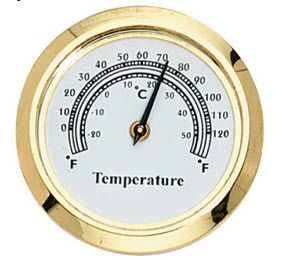Should Your Clock Parts be Digital or Analog?
 Some clock parts are digital, meaning that they utilize 7-segment screens to construct 2 numbers for the hour, 2 for the minutes, as well as often 2 for the seconds. Various other clock parts are analog, implying that they include motors, dials, as well as hands where traditional-looking timepieces are built. We aim to aid you decide which way to go.
Some clock parts are digital, meaning that they utilize 7-segment screens to construct 2 numbers for the hour, 2 for the minutes, as well as often 2 for the seconds. Various other clock parts are analog, implying that they include motors, dials, as well as hands where traditional-looking timepieces are built. We aim to aid you decide which way to go.
Digital clock parts tend to be uniform in appearance, the only variety being in terms of design, color, and size. On the other hand, you can invest all the time sorting through the wide variety of analog parts.
Diversities abound for the latter, based on a long history of making clocks. Various societies have influenced a broad range of styles in dials and hands. Characters, untethered to the 7-segment pattern, are free to be Arabic, Roman, or symbolic.
One could also argue that the two types differ subtly yet distinctly in terms of just what customers get out of a layout as well as quality viewpoint. People tend to look at an analog clock much more favorably, paying equivalent focus to the appearance and also craftsmanship as they pay to functionality. The electronic clock is watched almost specifically for function.
Now, from the viewpoint of reliability, electronic clock motions do a much better job of keeping time. Analog movements utilize small quartz crystals to obtain their timing, and also they might drift by as much as 20 seconds a month. Still, this isn't bad in downright terms.
But the digital parts are just that much a lot more exact. The timing source could not be qualitatively better compared to a quartz crystal, but electronic class utilizing mathematical computer signs up is much more accurate than the mechanical technique. At the luxury of the digital range are the so-called atomic clocks that make use of radio signals sent by a national standards facility in Colorado to integrate to the millisecond.
We are starting to put together a listing of criteria for contrasting analog clock parts with digital. We first talked about appearance and also then accuracy. We now being to special features and extensions not just to conventional timekeeping however also past it into various other sort of informational screens. Regrettably there is often no basis for objective comparison in this department.
Analog and electronic parts both convey simple timekeeping fairly adequately. By this we mean showing minutes and hours in a 12-hour cycle (one of the most common form of clock). Revealing seconds could be omitted or consisted of, with the digital version using 2 more 7-segment displays and the analog version using a pre-owned (ticking or continuous sweep).
To obtain 24-hour patterns is not a problem with digital parts (you simply alter a setting). But when using analog parts you need to trade the 12-hour dial with a 24-hour dial. This in turn requires a different clock motion that patterns twice as slowly (the hr hand traversing the circle once a day rather than twice a day).
Likewise, it requires a special activity, unique dial, as well as added hand to reveal the day in a 31-day schedule month or the day of the week. These are timekeeping expansions you could accomplish with analog parts, as well as their effect is generally quite striking. These exact same attributes are possible to realize electronically (as well as off-the-shelf clocks usually offer them), though it could be challenging for an individual to locate the parts to complete it through assembly.
The same discrepancies apply to revealing non-temporal information, typically weather-related in some manner. Common examples are temperature level and barometric stress. A somewhat even more exotic example for clocks in seaside regions is the display of tide level.
You could locate electronic clocks that consist of a thermometer and even a barometer, however it is unlikely you could track one down that reveals the tide. It ares less most likely that you would have the ability to construct such a clock yourself from electronic parts.
However, the analog globe does supply such parts. Don't count on finding integrated weather and clock movements, but you could get a specialized face, hand, and movement for showing temperature, and a different combination of such parts for showing tide. This form of thing affords much possibility for creativity.
Alarm clocks are popular, and it should be instead straightforward to build them from parts. Nevertheless, the alarm system feature is almost exclusively component of an off-the-shelf, pre-assembled clock. (You could have better good luck in the digital globe than in the analog one.).
Chimes are another add-on function that is sometimes popular, though less so today than fifty to a hundred years ago. Grandfather and mantle clocks of yore used to play on the hour a tonal pattern, typically the Westminster or Whittington melodies, and follow it with an hour count. Chiming can be achieved with analog parts (with several options) but almost certainly not with digital.
Pendulums were an essential component of mechanical clock Kits, however nowadays they are used solely for appearance or novelty. They are completely antithetical to digital clocks, but some analog clock electric motors supply oscillating nodules to which cosmetic pendulums could be attached.
We wish that these contrasts have been helpful. Clockmakers obtain a lot of pleasure from creating something useful, attractive, and unique. You should now be able to determine whether your clock parts need to be digital or analog.